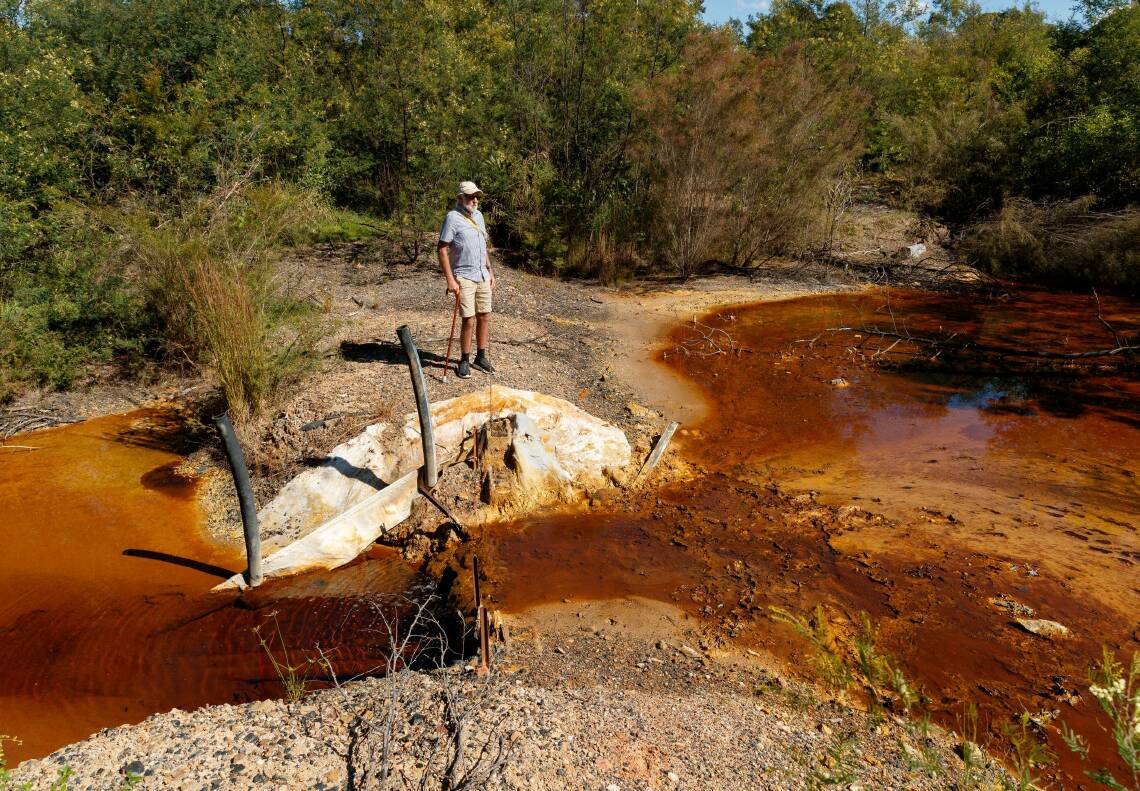
Bright orange "acid streams" are pouring from old coal mines across the Hunter, poisoning everything the water touches.
The mines are abandoned, but they are not empty. Over time, as the old workings continue to flood and water seeps through coal waste piles it spreads across the landscape in brightly-coloured streams that lead to the Hunter River.
The Hunter's acid curse is a legacy of toxic abandoned coal mines, where companies walked away from mines and countless coal waste dumps, without cleaning up or stabilising the sites.
A cocktail of sulphuric acid, iron and aluminium remains, scorching a burnt-orange path throughout the landscape, some effects can be seen 15 kilometres away.
There are more than 65 derelict mines in the Hunter, including at least seven affected by acid mine drainage including Aberdare East, Testers Hollow, Neath, Dagworth, Greta and Rothbury.
Experts warn the full extent of the acid mine drainage problem is unknown and there have been limited attempts by governments to address the environmental issue, which presents a hugely expensive clean-up challenge.
The issue is compounded by the unknown ways that old underground mines are connected.
Professor of Soil Science, from the University of Western Australia's Institute of Agriculture, Dr Nanthi Bolan said government funding was inadequate to address the issue.
Professor Bolan said "nothing survives" in acid mine drainage that leaves a biological wasteland in its path.
The acid kills fish and other things in the water, and a metallic sludge called "yellow boy" keeps insects from living on the bottom.
"The issue is when it ends up in creeks, or large open cut mines, the whole thing can become acid," he said.
"It causes major problems for the waterways and surrounding areas."
Last year, the NSW government set aside $108 million over 10 years to remediate some of the state's most problematic disused mine sites, in a move welcomed by both environmentalists and the mining industry.
The Legacy Mines Program funding was up from the $2.8 million spent in 2019-20.
The funds will primarily go to areas where mining ceased between 50 and 100 years ago, including Hebburn Colliery, near Weston.
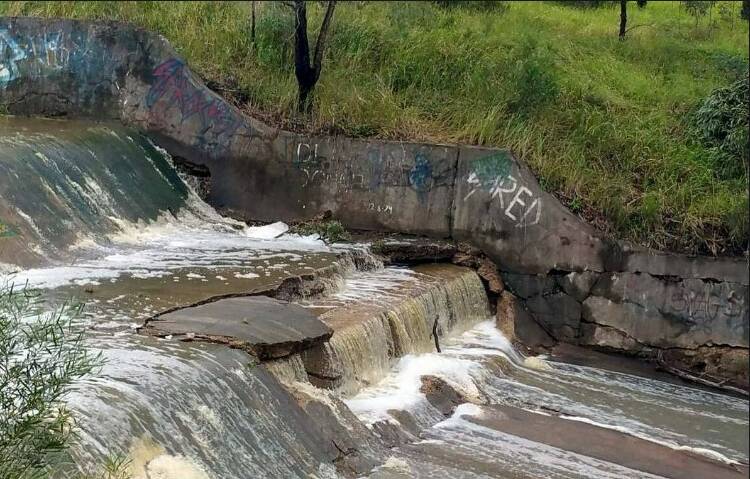
The 19-megalitre reservoir was built at the turn of last century to provide water for the steam-powered mine.
It has also served as a storage for acid-laced water that is pumped from surrounding abandoned mine workings.
A spokeswoman for the Department of Regional NSW said work, to be completed in 2023-24, would include re-vegetation and surface water drainage to prevent sediment and erosion, the construction of a wetland and improvements to the existing dam wall.
Large coal waste stockpiles and tailings will be compacted and reshaped to better manage combustion and acid drainage.
Hebburn Colliery began production in the early 1900s and continued until the 1970s.
Across the Hunter, 20 sites are on the Legacy Mines Database and 16 are classified as "low risk to community and the environment".
The spokeswoman said of the remaining four site, two are located on private properties at Neath and Hebburn.
"The NSW government is currently prioritising works to reduce risks to public safety and the environment at a number of locations across the state, which will include remediation at Hebburn Colliery," she said.
"Planning for remediation at Hebburn Colliery is in its early stages and a final cost is still to be determined."
Mr Maybury has been fighting to have acid-poisoned Lower Hunter coalmine sites cleaned up for more than 30 years.
Sick of watching acid water causing erosion and killing all plant, animal and aquatic life in its path, he has spent countless volunteer hours working to find a solution.
"These mines had no thought of any environmental issues, they just walked away and left a huge mess for the community to deal with," he said.

"They got their approvals, mined the areas, and then just took off. That was it, there was no accountability or thought about what was being left behind for the local communities to deal with."
The problem is much greater in the Lower Hunter due to coal in the area having abnormally high sulphur content.
Coal in seams around Newcastle and Wollombi have a sulphur content of about 0.35 per cent, while export coal in the Greta seam contains 5.2 per cent sulphur.
Waste coal is much worse. Tailings dumped at dozens of locations around Maitland and Cessnock have recorded sulphur content as high as 10.5 per cent.
Most of the toxic mines and coal waste dumps are "orphan sites" - no longer owned by mining companies which are therefore no longer held accountable.
Due to limited state budget funding for remediation, most sites are simply monitored.
The Department of Regional NSW spokeswoman said no collective liability had been determined for legacy mines across the Hunter.
"Remediation costs are dependent upon the scope of works at each site which can be determined by a number of factors," she said.
"Factors can include risk to public safety, environmental risk, intended land use and benefits of remediation."
She said current mining was "strictly regulated".
"All titleholders must provide a rehabilitation security deposit that covers the full cost of rehabilitation," she said.
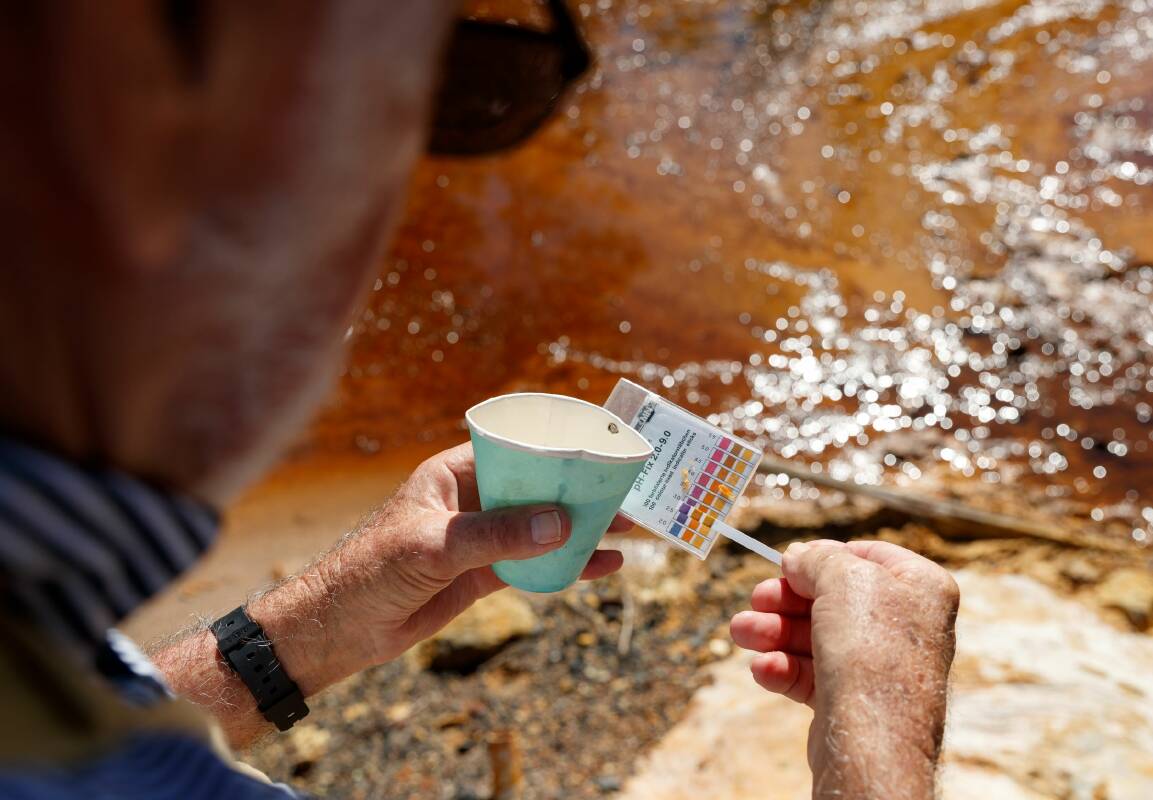
"The bond is held by the government and is not returned to the mine until rehabilitation is fully completed and the land is returned to the final approved landform. Rehabilitation obligations are legally enforceable and mining companies are responsible for all rehabilitation, even after the mine's closure."
The Australia Institute estimates up to $25 billion could be needed to fill and rehabilitate the Upper Hunter's 23 final voids when open-cut mining ends. By contrast, the state government holds just $3.6 billion in environmental rehabilitation bonds for all mines in the state.
The NSW Audit Office warned in 2017 that security deposits of the state's 450 mines "do not include sufficient contingency given the substantial risks and uncertainties associated with mine rehabilitation and closure".
Neath Colliery operated as an underground mine, open cut and coal washery from 1906 to 1988.
A 2.5-kilometre long, five-metre-high coal stockpile is a remnant of a former coal washery that closed down more than 50 years ago.
Large spoil piles present the biggest problem because they are in direct contact with air and rain. Some work was done by the NSW government at the site in 2000 and 2016, but a former pristine waterway fed by two springs remains glowing red and dead.
Kurri Kurri Landcare spent the best part of a decade working to rehabilitate old mine workings in their area - until state government bureaucrats told volunteers to stop. Using hydrated lime, the group's members helped to neutralise acidic runoff from an abandoned coal stockpile that was poisoning a tributary of Swamp Creek at Neath.
The Department of Lands ordered the group to stop dosing the creek about 12 years ago. The volunteers were told the work would be undertaken by Hunter Enviro Mining, which was granted a licence to clear 3 million tonnes of coal waste from the Cessnock area.
The work was never done and the company's licence has since expired. Meanwhile the cocktail of sulphuric acid, iron and aluminium has returned.
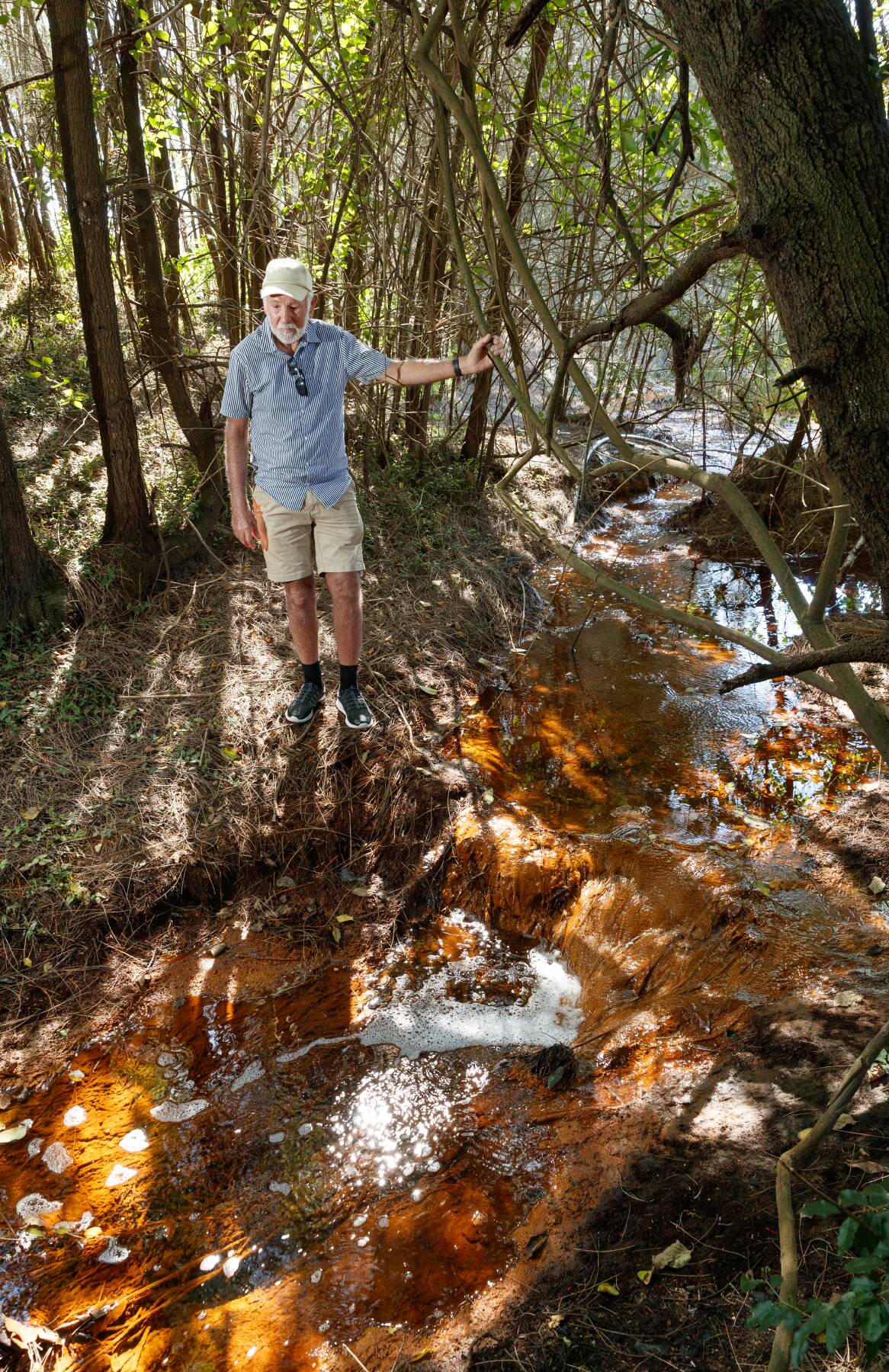
The most significant acid mine drainage problems in the Hunter result from the Greta and Tomago coal measures surrounding Maitland and Cessnock. Sea levels in the Lower Hunter estuarine area rose and fell several times, adding extra sulphides to those naturally occurring in coal.
In some cases surrounding soil can neutralise the acid reaction, but the high sulphur content and shallow nature of the Greta seam make that more difficult. The problem is extremely difficult to eliminate because it involves stopping water and oxygen interacting with sulphide minerals in coal.
Upper Hunter coal has a lower sulphide content and the surrounding soil and water a higher content of neutralising alkali.
RGS Environmental director Alan Robertson, whose company specialises in providing expertise on environmental management issues for mines, said the playing field had changed and there were a "lot more parameters" that come into play to get new mines and expansions approved.
Dr Robertson said there were only a few mines in the Hunter that generate acidic water and environmental concern into the future had shifted to salinity and final voids.
"It's not going to be an acid issue like we have seen in the past, it's more likely to be a salinity issue," he said. "If the water becomes more saline over time, things will have to be done like flow through to dilute it."
Other major environmental issues for existing Upper Hunter mines include dealing with waste materials, which have the potential to generate acid or neutral mine drainage, tailings dams that require covering, progressive rehabilitation and spontaneous combustion.
"We have got the technology these days to address the issues," he said. "We have the will and the understanding, but we have to make sure the studies are done early enough, well before closure."
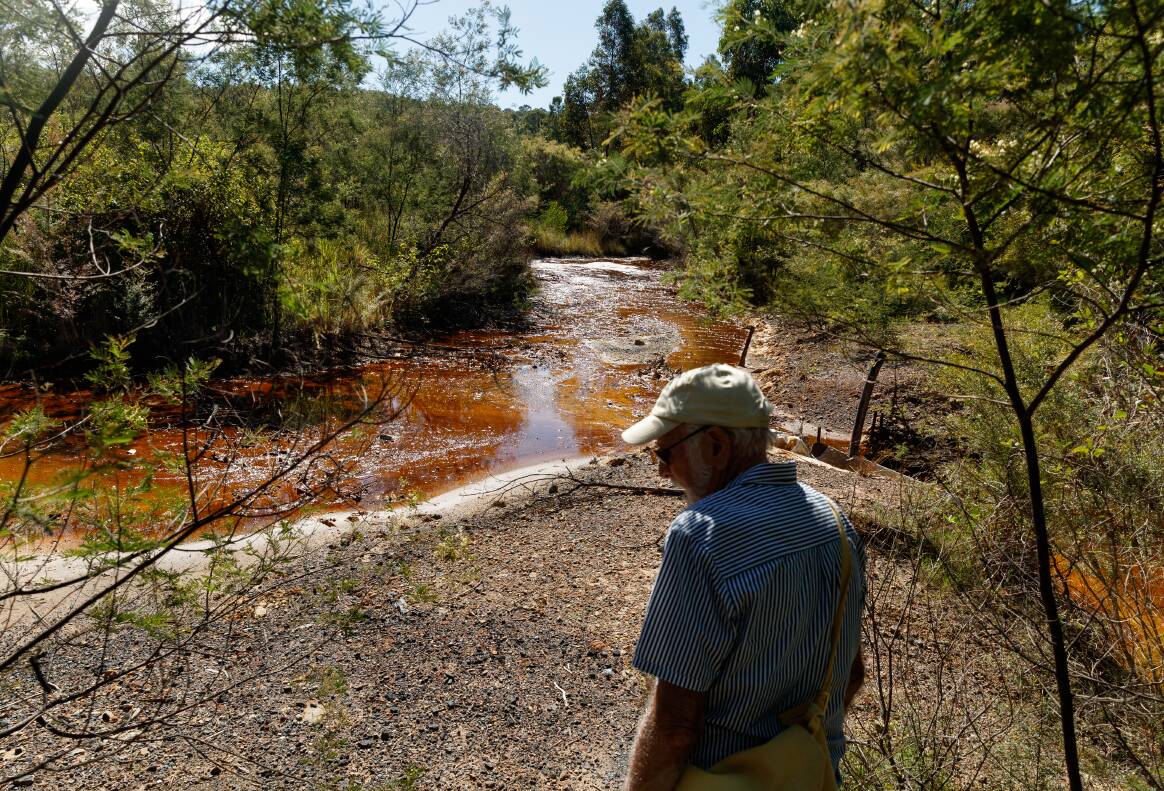
While acknowledging funding had increased, Dr Robertson said there was never enough money to deal with legacy mine problems.
He said it would require "an enormous effort" to completely fix acidic seep from abandoned Hunter mines.
"The way the government is using the funding is looking at the issue on a risk basis," he said. "They do audits and studies to look for the biggest risks. If the money is well spent, they will catch up eventually."
Growing up in the Coalfields, Mr Maybury remembers only too well the burning feeling of acid in his eyes as a young boy swimming in creeks and waterways.
"We used to have friends and relatives visit from out of town and at the end of the day their eyes would be red and swollen from the acid, it was terrible," he said.
It's not just acid mine drainage that the Legacy Mines Program funds.
The Newcastle Herald reported in 2013 the case of Allen and Claris Watson, of Waratah, whose Bridge St property was being inundated by water from old mine workings.
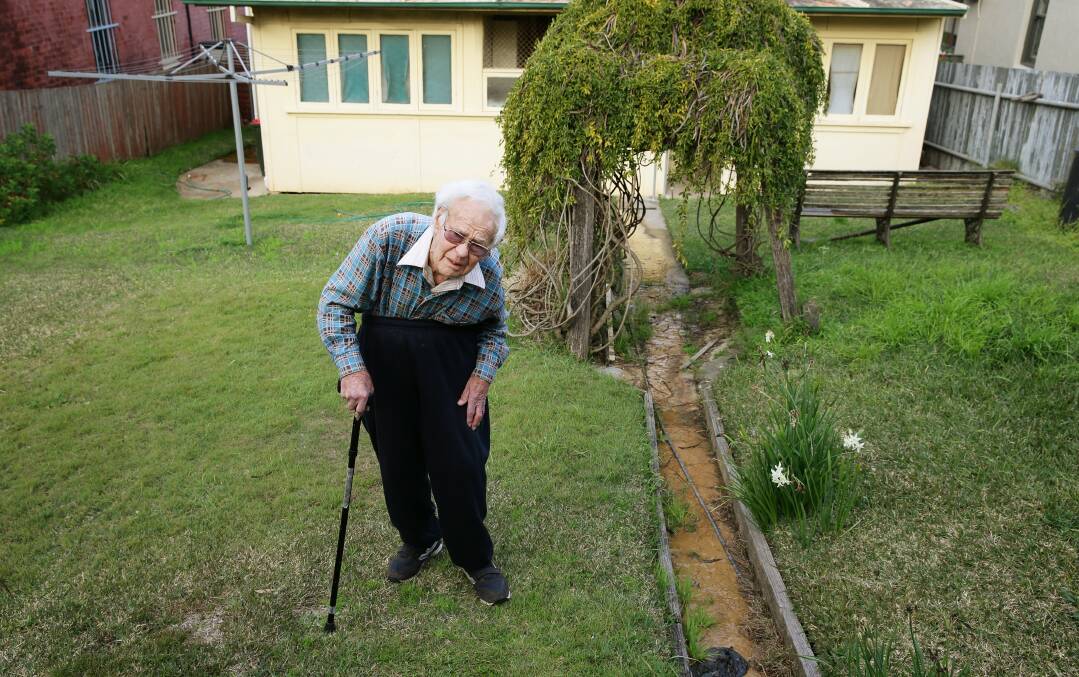
The late couple's case was passed between six government organisations over 30 years in an effort to prove the water was coming from the old Ellereay No.2 Mine, which maps revealed sat just 25 metres from their back fence.
Concrete piers under their garage disappeared into the ground, the backyard was constantly saturated and a corner of the house sunk.
Almost $260,000 from the Derelict Mines Program, now the Legacy Mines Program, was used to divert the water and repair the house.







